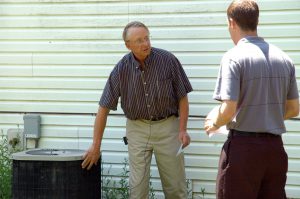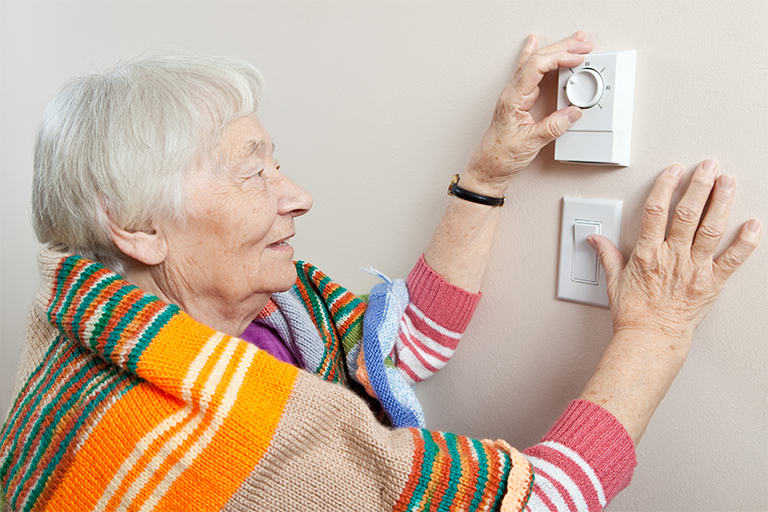By Pat Keegan and Brad Thiessen
Winter energy bills can be high, especially if you are using an older furnace, electric baseboards or wall heaters to heat your home. Upgrading to a different system or supplementing your existing system will cost more upfront, but heating system upgrades have a big effect on comfort and the pocketbook for many years.
A good first step, before making major changes to the heating system, is to look at the area you are heating. The amount of heated space and the efficiency of that space determine how large of a heating system you need. Air leaks and inadequate insulation might be a major cause of higher bills, and correcting these problems might enable you to install a smaller heating system.

An energy auditor can help you weigh your options before making major energy efficiency investments.
An energy audit will provide the answers you need and give you an idea of how much you can save from weatherization measures and a more efficient heating system. Contact your electric cooperative first to see if they offer energy audits or if they can recommend an auditor.
Propane furnaces are expected to last 15 to 25 years, but if it is well-maintained, you may get more mileage out of it. Even if your furnace is still running well and has some life left in it, it may not be efficient.
Propane, gas and oil furnace efficiency is measured by the Average Fuel Utilization Efficiency, or AFUE. This is indicated on a label which may still be attached to the furnace. A 20-year-old unit might have an AFUE in the 70 to 80 percent range. A new high-efficiency furnace can have an AFUE rating of more than 95 percent, which can reduce the portion of your propane bill that goes toward heating by 15 to 20 percent. The AFUE doesn’t account for any heat escaping through poorly-insulated or improperly-sealed pipes or furnace ducts, so take care of those issues first.
Besides replacing your furnace with a new one, there are two additional options. You could install an air source heat pump, which uses existing ductwork, or a mini-split heat pump, which can heat up to four rooms. The efficiency of heat pumps has greatly improved in the past decade, to the point where they are solid options even in colder climates.
High electric bills are common in inefficient homes that rely on resistance heat using wall heaters, portable heaters or baseboard heaters.
A home without ductwork will make the installation of a central heat pump very expensive. Another option would be to get a quote on a ductless mini-split heat pump. They are efficient for heating and cooling, so if you use a window A/C unit (or two) during the summer months, you can save even more money. Mini-splits are usually installed to heat and cool the largest, most used area of a home.
You can continue to use baseboard heaters in the rooms you don’t use as often. As efficient as the mini-splits are, they might not provide enough heat in a prolonged, extreme cold snap, so leaving a few baseboard heaters connected is a good idea.
Scheduling an energy audit and considering all your options gives you the best chance at making the right decisions.
This column was co-written by Pat Keegan and Brad Thiessen of Collaborative Efficiency.

